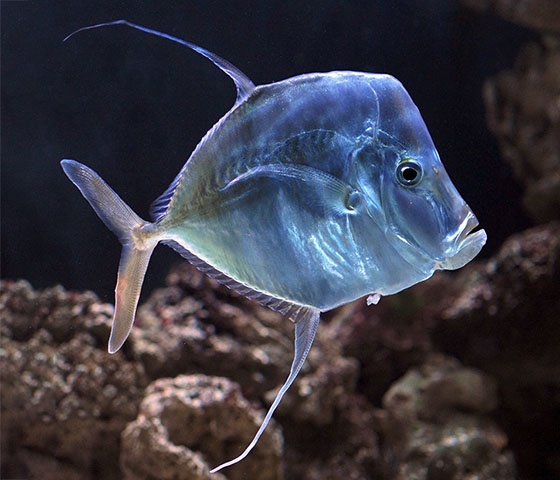| Carangidae (Jacks and pompanos), subfamily: Caranginae |
| 48.3 cm TL (male/unsexed); max.weight: 2,100.0 g |
|
demersal; brackish; marine; depth range 1 - 53 m |
| Western Atlantic: Canada (Ref. 5951) to Maine to Florida, USA (possibly from Nova Scotia, Canada), along coasts of central and south America (Ref. 26938) to Uruguay, including Bermuda and Gulf of Mexico (Ref. 9626). Rare in Greater Antilles (Ref. 26938). |
|
Dorsal spines (total): 9-9; Dorsal soft rays (total): 23-23; Anal spines: 3-3; Anal soft rays: 18-18. Pelvic fin small. |
| Adults are found in shallow coastal waters, usually over hard or sandy bottoms. Juveniles may be encountered in estuarine areas (Ref. 9626) and off sandy beaches (Ref. 5217). Found in schools, but may be encountered in small groups or in pairs (Ref. 26235). Adults feed on small crabs, shrimps, fishes, and worms. Flesh has excellent flavor (Ref. 5521). Marketed fresh (Ref. 9710). |
|
Least Concern (LC); Date assessed: 21 August 2012 Ref. (130435)
|
| reports of ciguatera poisoning |
Source and more info: www.fishbase.org. For personal, classroom, and other internal use only. Not for publication.

